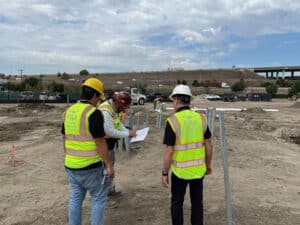
The construction industry involves the building, maintenance, and improvement of infrastructure and buildings. This includes a wide range of activities, such as residential and commercial construction, road and bridge building, and utility work.
There are several challenges that the construction industry faces, including:
- Cost and budget management: Construction projects often have strict budgets and timelines, and any delays or cost overruns can have significant financial implications.
- Safety: The construction industry has a high rate of workplace injuries and fatalities. Ensuring the safety of workers is a top priority.
- Productivity: Construction projects can be complex, with many different stakeholders and variables involved. Maintaining productivity and efficiency is crucial to ensure that projects are completed on time and within budget.
Several other challenges, including, skilled labor shortages, environmental concerns and the rapid technological advancements are prominent but in this post, I want to focus on how drone technology can help the top 3 on the above list.

Drone pilot working with site GM to solve construction project challenges.
Here are my Top 5 ways drone technology can solve challenges the construction industry faces today:
Construction Monitoring
Drones provide a cost-effective way to manage critical functions for Contractors and Construction Firms. Drones can produce high-resolution, on-demand, aerial photography of important project elements such as monitoring subcontractors, stockpile management, materials, equipment, and site security.
Construction Surveying
The use of drones in construction surveying has become commonplace in today’s building landscape. Where older surveying technologies fell short in terms of production turn-around, cost, and accuracy, photogrammetry has been a game-changer in each of these areas.
Construction Progress Reporting
Key stakeholders (i.e.., Investors) can be visually connected to project progress in new and innovative ways. The programmatic use of drones to produce high-quality aerial images and video enables near real-time inspection of all aspects of the project. Images can be easily rendered in 3D models, orthomosaic maps, and other photogrammetry data to monitor site progress.
Construction Inventory Management
One of the most basic functions for a contractor is inventory management. Aerial photography of a job site provides actionable data for contractors to assess and respond to critical inventory needs. Drones transform the risky, labor-intensive and time-consuming job of manual inventory counts and volumetric assessments into timely and cost-effective tasks.
Construction Structural Site Integrity
Assessing structural vulnerabilities is a key job function of the project General Contractor. Key stakeholders are acutely attuned to the notion of minimizing the risk associated with potential structural defects. The use of drones to identify such defects helps to mitigate potential lawsuits and other aspects that could create costly delays in project completion.
It’s clear drones have the potential to solve several construction industry challenges and make project deliverables more efficient, safe, and cost-effective.
From The Editor:
Do you need to hire a professional drone service provider? To speak to an aerial data specialist, fill out a form, email us or for even faster response times, give us a call at (833) FLY-4YOU or (833) 359-4968. Check out our transparent pricing at Drone Photography Pricing and watch this space as we expand on the above topics and more over the coming weeks and months. If you like this post, feel free to click the share button at the bottom of the page. We appreciate you helping us by spreading the content we share on our blog.
- Drones and Construction – The 2025 Outlook - February 8, 2025
- The Future of Business: Top 7 Commercial Drone Applications Across Key Sectors - January 19, 2025
- From Over-Ordering to Supplier Accountability: How Drones Redefine Stockpile Management - January 12, 2025

